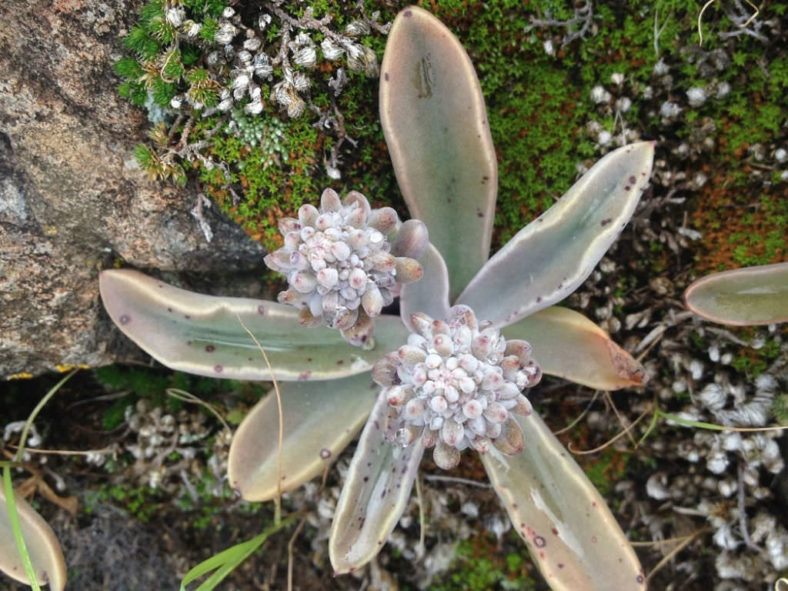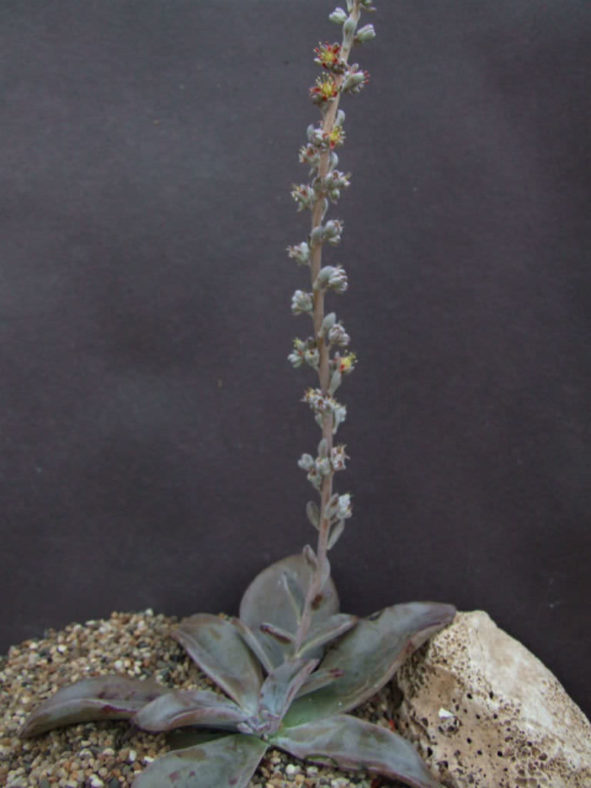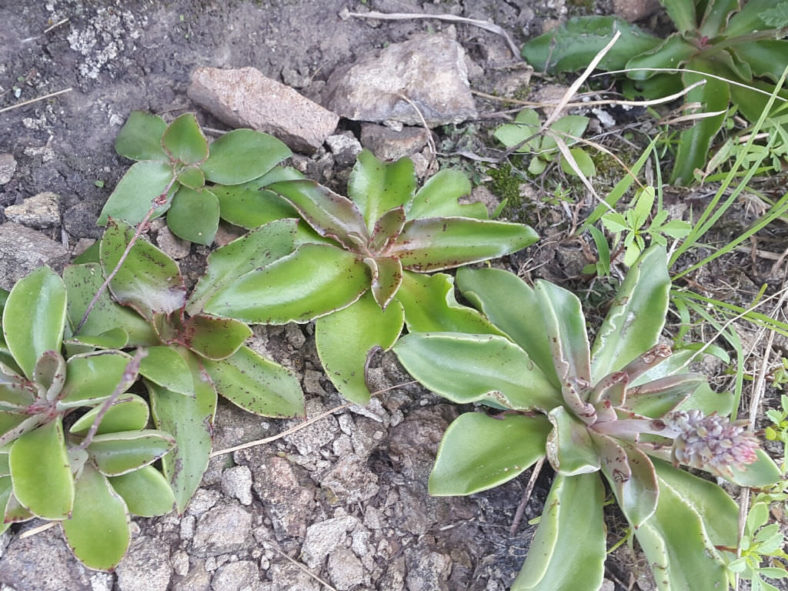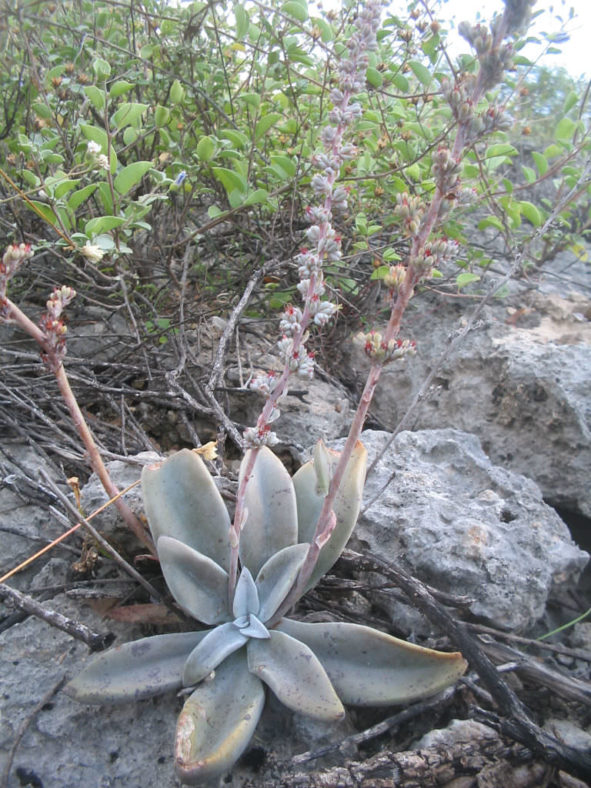Scientific Name
Thompsonella minutiflora (Rose) Britton & Rose
Synonym(s)
Echeveria minutiflora, Echeveria tepacensis, Graptopetalum mexicanum
Scientific Classification
Family: Crassulaceae
Subfamily: Sempervivoideae
Genus: Thompsonella
Origin
Thompsonella minutiflora is native to Mexico.
Description
Thompsonella minutiflora is a small succulent plant with a perennial caudex and a rosette of 10 to 20 deciduous dark green leaves spotted or tinged with purple. The caudex can grow up to 0.4 inches (1 cm) in diameter, while the rosette can reach a diameter of up to 6.8 inches (17 cm). The leaves are narrowly obovate, channeled to more or less folded lengthwise, measuring up to 4 inches (10 cm) long and 1 inch (2.5 cm) wide.
The flowers appear on erect stalks that can grow up to 14 inches (35 cm) tall

Hardiness
USDA hardiness zones 10a to 11b: from 30 °F (−1.1 °C) to 50 °F (+10 °C).
How to Grow and Care
Most common Echeveria species are not complicated succulents to grow, provided you follow a few basic rules. First, be careful never to let water sit in the rosette as it can cause rot or fungal diseases that will kill the plant. Additionally, remove dead leaves from the bottom of the plant as it grows. These dead leaves provide a haven for pests, and Echeverias are susceptible to mealy bugs. Finally, as with all succulents, careful watering habits and plenty of light will help ensure success.
Repot as needed, preferably during the warm season. To repot a succulent, ensure the soil is dry before repotting, then gently remove the pot. Knock away the old soil from the roots, removing any rotted or dead roots in the process. Treat any cuts with a fungicide.
Most Echeverias can be easily propagated from leaf cuttings, although some are better from seeds or stem cuttings. To propagate a leaf cutting, place the individual leaf in potting soil for succulents and cover the dish until the new plant sprouts.
See more at How to Grow and Care for Echeveria.
Links
- Back to genus Thompsonella
- Succupedia: Browse succulents by Scientific Name, Common Name, Genus, Family, USDA Hardiness Zone, Origin, or cacti by Genus
Photo Gallery
Click on a photo to see a larger version.


